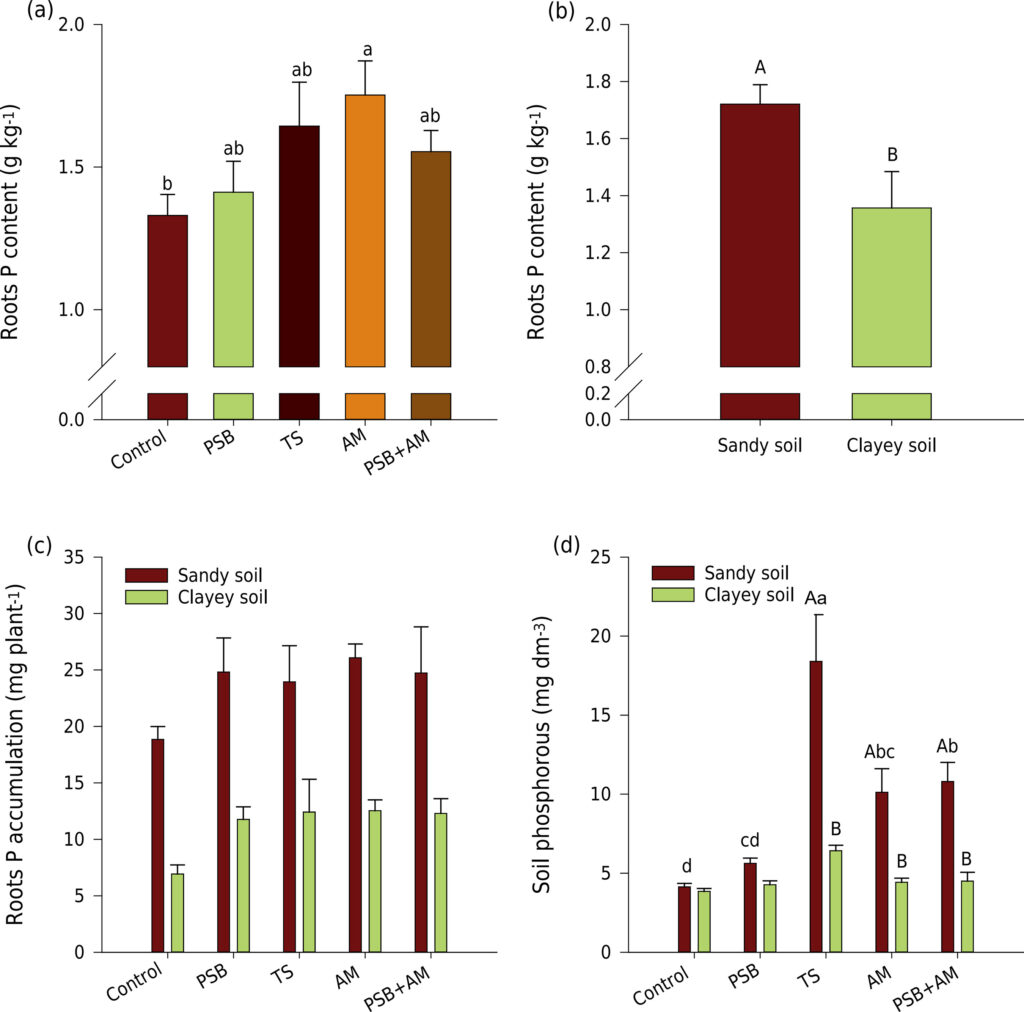Rev. Bras. Ciênc. Solo.2025;49(spe1):e0240165.
Soybean inoculated with phosphorus-solubilizing bacteria and co-inoculated with arbuscular mycorrhizal fungi in clay and sandy soils
12/nov/2025
DOI: 10.36783/18069657rbcs20240165
ABSTRACT
Although Brazilian soils contain considerable reserves of total P, accumulated by constant phosphorus (P) application, most of it is preserved in non-labile and moderately labile fractions, which could not be efficiently exploited so far. This study aimed to evaluate microorganisms capable of accessing less available P fractions in two soils with different textures. A greenhouse experiment in a completely randomized design, in a factorial arrangement (2 × 5) with four replications, was carried out in the municipality of Bandeirantes, Paraná. The regional climate was classified as humid subtropical (Cfa) and the average temperature during the experimental cycle was 25.6 °C (max. 40 °C, min. 15 °C). Water was added to maintain humidity at around 60 % of the maximum water retention capacity (MWRC). The first factor consisted of two different-textured soils (sandy and clayey), taken from areas with little human interference. The second factor comprised the soybean treatments: T1 – control (no inoculation nor P fertilization); T2 – mineral fertilization (triple superphosphate); T3 – seeds inoculation with Bacillus strains; T4 – inoculation with arbuscular mycorrhizal fungi (AMF); T5 – co-inoculation with Bacillus and AMF strains. Response variables related to the agronomic performance of soybean were analyzed (shoot and root dry weight; number of pods per plant; nodulation; P content and P accumulation in shoot and roots), as well as variables related directly with microbial performance (degree of AMF colonization and soil available P content (Mehlich-1), an indicator of the P desorption dynamics of the microorganisms). In the sandy soil, AMF proved more effective in raising levels of available P (Mehlich-1) than the control. However, under the experimental conditions, the microorganisms did not significantly increase P availability in clayey soils. Nevertheless, AMF inoculation proved to be a promising possibility of improving P availability in soybean. Regardless of the soil texture studied — sandy or clayey —, the results of inoculation or co-inoculation were equivalent or superior to those of triple superphosphate fertilization and consistently better than those of the control, for most response variables.
35

